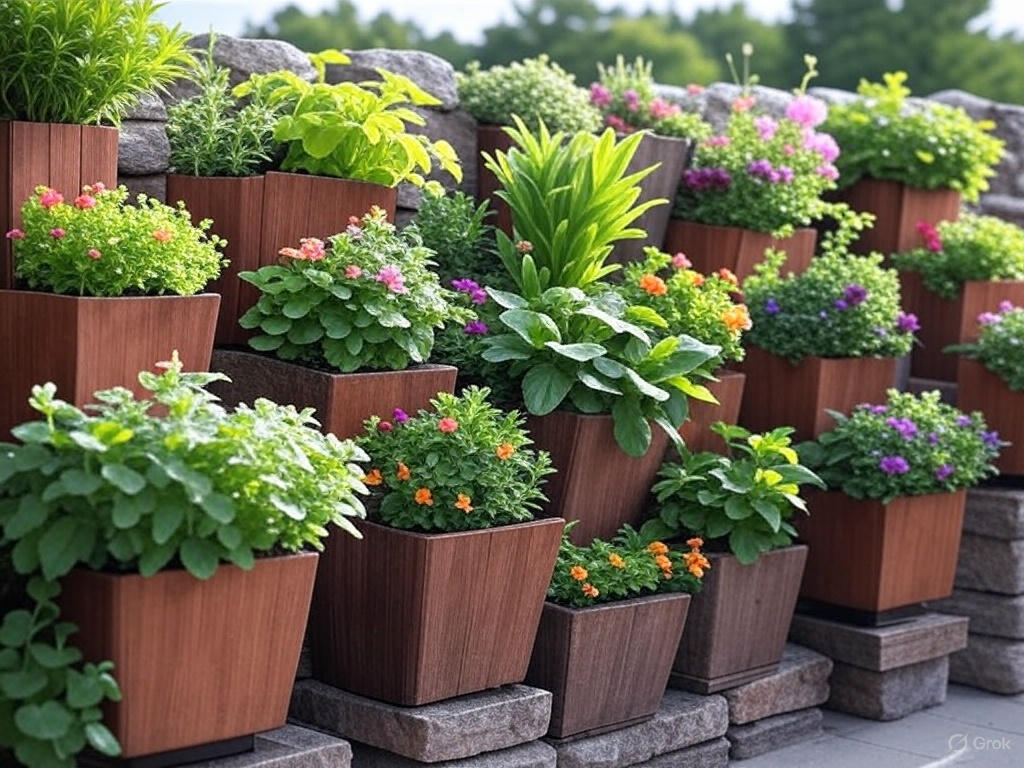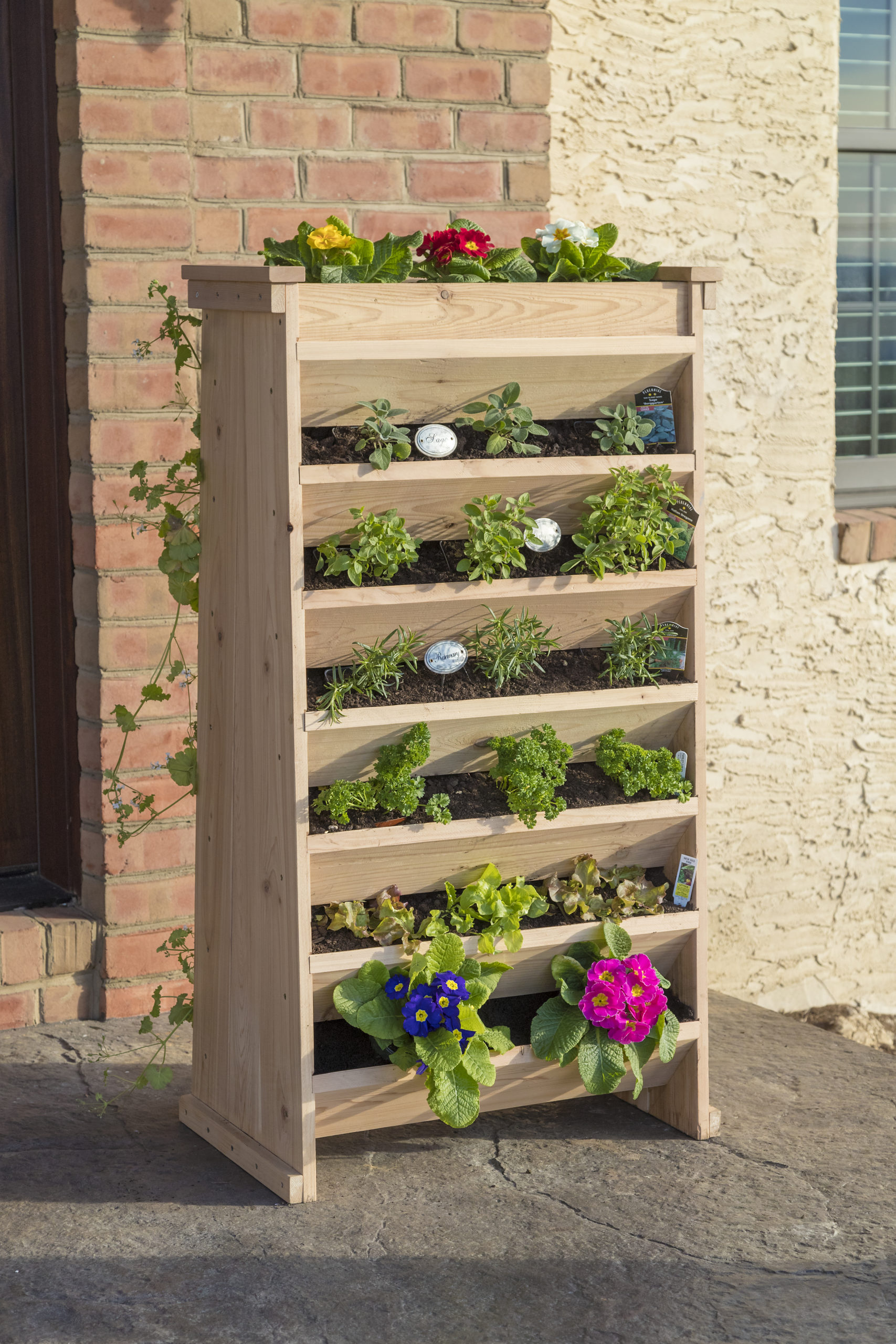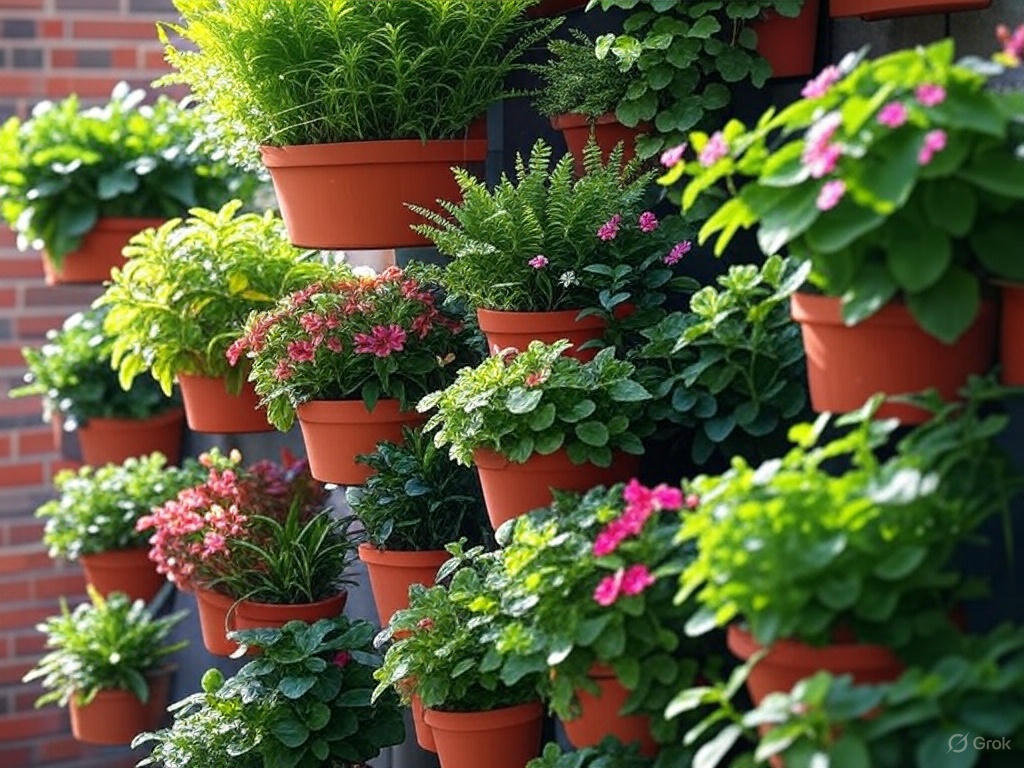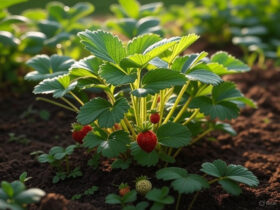Outdoor vertical garden planters offer a fresh way to enhance small spaces. They bring greenery to urban areas and transform bland walls into lush landscapes.
Vertical gardening is gaining popularity among city dwellers with limited space. It’s a creative solution for growing plants and herbs in compact places. These planters are not just functional; they are also a stylish addition to any outdoor setting. Imagine vibrant flowers or fresh herbs right outside your door.
Vertical gardens maximize your space, creating an oasis of nature. They are easy to set up and require minimal upkeep. Perfect for balconies or patios, they add life to your surroundings. Discover how vertical garden planters can change your outdoor living area into a thriving green space.
Benefits Of Vertical Garden Planters
Outdoor vertical garden planters offer a creative solution for those who want to grow plants but lack horizontal space. These innovative planters allow you to grow a variety of plants in a vertical arrangement, making them perfect for small patios, balconies, or urban gardens. Let’s explore some of the key benefits of vertical garden planters.
Space Efficiency
Outdoor vertical garden planters maximize the use of limited space, making them ideal for urban environments or small yards. By growing plants vertically, you can utilize walls, fences, or even standalone structures. This method allows you to grow more plants in a smaller footprint. Here are some ways vertical garden planters enhance space efficiency:
- Maximize small spaces: Perfect for balconies, patios, and small backyards.
- Use walls and fences: Turn unused vertical surfaces into productive garden spaces.
- Layer plants: Grow a variety of plants in tiers, making the most of every inch of space.
Consider the following table to understand the space-saving potential of vertical garden planters:
| Type of Planter | Space Required | Number of Plants |
|---|---|---|
| Traditional Horizontal Planter | 5 sq. ft. | 10 plants |
| Vertical Garden Wall Planter | 2 sq. ft. | 30 plants |
Vertical garden planters outdoor offer a practical solution for maximizing plant growth in limited spaces. They provide an efficient way to grow herbs, flowers, and even vegetables. Embrace the space efficiency of vertical garden planters DIY and transform your small areas into lush, green spaces.
Table of Contents
Enhanced Aesthetics
Vertical garden wall planters not only save space but also enhance the visual appeal of your outdoor areas. A well-designed vertical garden can serve as a stunning focal point, adding beauty and interest to otherwise plain walls or fences. Here are some ways vertical garden planters improve aesthetics:
- Create living art: Transform blank walls into vibrant, green works of art.
- Add color and texture: Mix different plants to create a rich tapestry of colors and textures.
- Hide unsightly areas: Cover unattractive walls or fences with lush greenery.
Vertical wall garden planters offer endless possibilities for enhancing outdoor aesthetics. You can create a lush green wall with a variety of plants such as ferns, succulents, and flowering plants. These planters can be designed to match your personal style and the overall theme of your garden. Whether you prefer a modern, minimalist look or a more eclectic, bohemian vibe, vertical garden planters outdoor can be customized to suit your taste.
Incorporate vertical garden planters DIY projects to add a personal touch to your garden. Use recycled materials, such as pallets or old picture frames, to create unique and eco-friendly vertical garden structures. The possibilities are endless, and the result is a visually stunning and environmentally friendly garden space.
Vertical garden wall planters offer a beautiful and practical way to enhance your outdoor space. They provide a perfect balance of form and function, making your garden both beautiful and productive.

Choosing The Right Location
Outdoor vertical garden planters are a fantastic way to bring greenery to any space. They are perfect for small yards, balconies, or patios. Choosing the right location for your vertical garden planters is crucial. It ensures your plants get the right conditions to thrive. Let’s look at some key factors to consider.
Sunlight Exposure
Sunlight is vital for plant health. Each plant has its own light requirements. When selecting a spot for your outdoor vertical garden planters, keep these points in mind:
- Full Sun: Some plants need at least six hours of direct sunlight each day. Ideal for herbs like basil and vegetables like tomatoes.
- Partial Sun/Shade: Plants that require three to six hours of sunlight fall into this category. Good for leafy greens like spinach and lettuce.
- Full Shade: These plants do well with less than three hours of direct sunlight. Perfect for ferns and hostas.
Observe your outdoor space. Track the sunlight patterns throughout the day. Note areas with consistent light and those that stay shaded. This helps in selecting the best spot for different types of vertical wall garden planters.
Consider the direction your wall faces. North-facing walls get less direct sunlight. South-facing walls receive the most sunlight. East-facing walls get morning sun, while west-facing walls get afternoon sun. Use this information to position your vertical garden planters outdoor for optimal light exposure.
Accessibility
Ease of access is essential. It ensures you can tend to your plants regularly. Here are some factors to consider:
- Watering: Choose a location near a water source. This makes it easy to water your vertical garden planters diy.
- Maintenance: Ensure you can reach all parts of the garden. This is important for pruning, harvesting, and pest control.
- Comfort: Place the garden at a height that is comfortable for you. This reduces strain on your back and knees.
Think about the weather. Outdoor vertical garden planters might need protection from strong winds or heavy rain. Position them in a sheltered spot if necessary. Ensure the area is safe and stable. Avoid placing them where they can be easily knocked over or damaged.
Accessibility also includes visibility. Position your vertical garden wall planters where you can enjoy them. A visible spot encourages regular care. It also adds beauty to your outdoor space.
Use these tips to create a thriving, accessible, and beautiful vertical garden. Your plants will thank you!
Types Of Vertical Planters
Outdoor vertical garden planters are a fantastic way to maximize your gardening space. They allow you to grow plants vertically, making them perfect for small gardens, patios, or balconies. There are various types of vertical planters available, each with unique features and benefits. Understanding the different types can help you choose the best option for your garden.
Wall-mounted
Wall-mounted vertical garden planters are ideal for creating a green wall on the side of your home, fence, or any vertical surface. These planters save ground space and add a beautiful, living element to your walls. They are perfect for small spaces and urban environments.
Some advantages of wall-mounted vertical garden planters include:
- Space-saving design
- Easy access for maintenance
- Improved air quality
- Enhanced aesthetic appeal
Wall-mounted planters come in various materials such as plastic, metal, and wood. They can be individual pots or modular systems that allow you to customize the layout. Some popular options are pocket planters, which have small pockets for each plant, and panel planters, which are larger and can hold multiple plants.
Here is a table showing some common types of wall-mounted vertical garden planters:
| Type | Material | Features |
|---|---|---|
| Pocket Planters | Fabric | Individual pockets for plants |
| Panel Planters | Metal | Large panels for multiple plants |
| Modular Systems | Plastic | Customizable layout |
Wall-mounted vertical garden planters outdoor are perfect for creating a lush, green environment in any space.
Freestanding
Freestanding vertical garden planters are self-supporting structures that can be placed anywhere in your garden or patio. They do not need to be attached to a wall, making them versatile and easy to move. These planters are great for creating a focal point in your garden.
Some benefits of freestanding vertical garden planters include:
- Flexibility in placement
- Easy relocation
- Variety of designs
- Ideal for larger plants
Freestanding planters come in various shapes and sizes, from tall towers to multi-tiered stands. They can be made from materials like wood, metal, and plastic. Some popular types include:
- Plant Towers: Tall structures with multiple levels for planting.
- Tiered Stands: Shelves or tiers for different plants.
- DIY Structures: Custom-built from wood or other materials.
Here is a table showing some common types of freestanding vertical garden planters:
| Type | Material | Features |
|---|---|---|
| Plant Towers | Plastic | Multi-level planting |
| Tiered Stands | Wood | Shelves for plants |
| DIY Structures | Varies | Custom-built |
Freestanding vertical garden planters outdoor offer flexibility and can be placed anywhere you desire, making them an excellent choice for any garden.

Selecting Suitable Plants
Outdoor vertical garden planters are an excellent way to bring green space into small areas. Selecting suitable plants is crucial for a thriving garden. The right plants can make your vertical garden planters outdoor not only look beautiful but also functional. Here, we will explore various plant options that work best for your vertical garden.
Herbs And Vegetables
Choosing the right herbs and vegetables for your vertical garden planters outdoor can be very rewarding. These plants are often compact and can thrive in a vertical setting. Here are some great options:
- Basil: Grows well in small spaces and is perfect for culinary use.
- Mint: Easy to grow and can be used in teas and cooking.
- Parsley: Versatile herb that does well in vertical garden planters diy.
- Cherry Tomatoes: Compact and great for vertical garden wall planters.
- Lettuce: Grows quickly and can be harvested multiple times.
- Spinach: Another fast-growing vegetable that fits well in vertical wall garden planters.
Herbs and vegetables need adequate sunlight and water to thrive. Ensure your vertical garden receives at least 6 hours of sunlight per day. Watering should be consistent but not excessive. A drip irrigation system can be very effective in vertical garden planters.
| Plant | Sunlight | Watering |
|---|---|---|
| Basil | 6-8 hours | Moderate |
| Mint | Partial Sun | Moderate |
| Parsley | Full Sun | Moderate |
| Cherry Tomatoes | Full Sun | Regular |
| Lettuce | Partial Sun | Regular |
| Spinach | Partial Sun | Regular |
Flowers And Foliage
Flowers and foliage can add color and texture to your vertical garden planters outdoor. They enhance the aesthetic appeal and can create a stunning visual impact. Here are some great choices:
- Petunias: Bright and vibrant flowers that bloom throughout the season.
- Begonias: Ideal for shady areas and offer continuous blooms.
- Ferns: Provide lush, green foliage that adds depth to your vertical garden wall planters.
- Succulents: Low-maintenance plants that thrive in vertical garden planters diy.
- Geraniums: Hardy flowers that can withstand various weather conditions.
- Ivy: Great for creating a cascading effect in vertical wall garden planters.
Flowers and foliage generally need less maintenance compared to herbs and vegetables. They can tolerate a wider range of sunlight and watering conditions. Some flowers, like petunias and geraniums, require full sun, while ferns and begonias prefer shade.
| Plant | Sunlight | Watering |
|---|---|---|
| Petunias | Full Sun | Moderate |
| Begonias | Partial Shade | Moderate |
| Ferns | Shade | Regular |
| Succulents | Full Sun | Low |
| Geraniums | Full Sun | Moderate |
| Ivy | Partial Shade | Low |
Combining different flowers and foliage can create a dynamic and attractive vertical garden. Mix plants with varying heights, colors, and textures for the best visual effect. This variety will make your vertical garden planters outdoor a focal point in any space.
Soil And Nutrients
Outdoor vertical garden planters are a fantastic way to maximize green space in small areas. They add beauty to walls and fences while providing fresh herbs, vegetables, and flowers. But to keep these gardens thriving, the right soil and nutrients are essential.
Soil Mix Recommendations
Choosing the right soil mix for your outdoor vertical garden planters is crucial for plant health. A good soil mix should be lightweight, well-draining, and nutrient-rich. Here are some key components to consider:
- Potting Soil: Use high-quality potting soil as a base. It should be light and airy.
- Compost: Add compost to provide essential nutrients. It improves soil structure and water retention.
- Perlite or Vermiculite: These materials improve drainage and aeration. They prevent soil from becoming compacted.
- Coconut Coir: This sustainable material helps retain moisture while allowing good drainage.
Here is a simple soil mix recipe for vertical garden planters diy:
| Ingredient | Quantity |
|---|---|
| Potting Soil | 50% |
| Compost | 30% |
| Perlite or Vermiculite | 10% |
| Coconut Coir | 10% |
Mix these ingredients thoroughly to ensure even distribution of nutrients and moisture. This blend is ideal for most vertical garden wall planters.
Fertilization Tips
Fertilizing your vertical wall garden planters is vital for plant growth and productivity. Plants in vertical gardens have limited soil and nutrients, so regular feeding is necessary. Here are some fertilization tips:
- Slow-Release Fertilizer: Mix slow-release fertilizer into the soil mix. It provides a steady supply of nutrients over time.
- Liquid Fertilizer: Apply a balanced liquid fertilizer every 2-4 weeks. It ensures quick nutrient uptake.
- Organic Options: Use organic fertilizers like fish emulsion or seaweed extract. They are gentle and add beneficial microbes.
- Avoid Over-Fertilizing: Too much fertilizer can harm plants. Follow the recommended dosage on the product label.
Consider using a foliar spray for your vertical garden planters outdoor. It involves spraying a diluted fertilizer solution directly onto the leaves. This method allows for quick nutrient absorption.
Keep an eye on your plants for signs of nutrient deficiency. Yellowing leaves, stunted growth, or poor flowering indicate the need for more fertilizer. Proper fertilization helps your vertical garden thrive, producing lush, healthy plants.

Watering Techniques
Outdoor vertical garden planters offer a unique and space-saving way to grow plants. Proper watering techniques are essential for maintaining the health and vibrancy of your plants. Understanding the best methods to water your vertical garden wall planters can make a significant difference. Let’s explore two effective watering techniques: drip irrigation and manual watering.
Drip Irrigation
Drip irrigation is a highly efficient method for watering vertical garden planters outdoor. It delivers water directly to the roots of each plant, minimizing waste and ensuring consistent moisture levels. This technique is ideal for vertical garden planters DIY setups, as it can be customized to fit the specific needs of your garden.
Here are some benefits of drip irrigation for your outdoor vertical garden planters:
- Water Efficiency: Drip irrigation uses less water compared to traditional methods.
- Targeted Delivery: Water is delivered directly to the plant roots.
- Reduced Evaporation: Minimizes water loss due to evaporation.
- Less Weed Growth: Watering only the plants reduces weed growth around them.
Setting up drip irrigation for vertical garden wall planters involves several steps:
- Install a main water line connected to a water source.
- Add drip emitters or micro-sprinklers to the main line.
- Position the emitters close to the plant roots.
- Adjust the water flow to ensure adequate moisture levels.
A table can help outline the components needed for a drip irrigation system:
| Component | Description |
|---|---|
| Main Water Line | Connects to the water source and distributes water. |
| Drip Emitters | Deliver water directly to the roots. |
| Micro-Sprinklers | Provide wider coverage for larger plants. |
| Pressure Regulator | Ensures consistent water pressure. |
Drip irrigation is a reliable and low-maintenance option for maintaining the health of your vertical wall garden planters.
Manual Watering
Manual watering is a straightforward and hands-on approach to keeping your vertical garden planters outdoor hydrated. This method allows you to monitor the moisture levels closely and adjust as needed. It’s particularly useful for vertical garden planters DIY enthusiasts who enjoy a more tactile gardening experience.
Advantages of manual watering include:
- Control: Direct control over the amount of water each plant receives.
- Flexibility: Easy to adjust based on weather conditions.
- Observation: Helps spot any issues like pests or diseases early.
Effective manual watering involves several best practices:
- Water plants early in the morning or late in the evening.
- Use a watering can with a fine nozzle for even distribution.
- Check the soil moisture regularly to avoid overwatering.
- Water at the base of the plants to prevent foliage diseases.
Below is a simple guide for manual watering frequency based on plant types:
| Plant Type | Watering Frequency |
|---|---|
| Succulents | Once every two weeks |
| Herbs | Twice a week |
| Flowers | Three times a week |
| Vegetables | Daily during growing season |
Manual watering gives a personal touch to caring for your vertical garden wall planters. It allows you to be closely involved in the growth and health of your plants.
Maintenance Tips
Outdoor vertical garden planters bring a refreshing touch to any space. Their maintenance is crucial for thriving plants and a vibrant garden. Proper care ensures your vertical garden stays healthy and lush. Here are some maintenance tips for your outdoor vertical garden planters.
Pruning And Harvesting
Pruning and harvesting are essential for vertical garden planters outdoor. Regular pruning keeps your plants healthy and promotes growth. Here are some tips:
- Use sharp, clean tools: Dull tools can harm plants. Clean tools prevent disease spread.
- Remove dead or yellowing leaves: This improves air circulation and prevents disease.
- Trim overgrown plants: This ensures they don’t overshadow smaller plants.
Harvesting is just as important in maintaining your vertical garden wall planters. Follow these harvesting tips:
- Pick ripe produce: Harvest fruits and vegetables when they are ripe. This encourages more production.
- Harvest regularly: Frequent harvesting keeps plants productive and prevents overgrowth.
- Be gentle: Handle plants carefully to avoid damage.
Pruning and harvesting are vital for the health of your vertical garden planters diy. They ensure plants get enough light and space to grow.
Pest Control
Pest control is crucial for maintaining healthy vertical wall garden planters. Pests can damage plants and hinder growth. Here are some pest control tips:
- Inspect regularly: Check plants for signs of pests, such as holes in leaves or sticky residue.
- Use natural remedies: Natural pest control methods include neem oil, insecticidal soap, and introducing beneficial insects like ladybugs.
- Maintain cleanliness: Keep the area around your vertical garden planters outdoor clean. Remove fallen leaves and debris that can attract pests.
Sometimes, a table can help summarize pest control methods effectively:
| Pest | Signs | Control Method |
|---|---|---|
| Aphids | Sticky residue, curled leaves | Insecticidal soap, ladybugs |
| Spider Mites | Fine webbing, yellow spots | Neem oil, water spray |
| Whiteflies | White flies when disturbed | Sticky traps, insecticidal soap |
Effective pest control keeps your vertical garden planters diy healthy and productive. Regular checks and natural methods are key to a thriving garden.

Frequently Asked Questions
Are There Any Drawbacks To Using Vertical Gardens?
Vertical gardens can have drawbacks like high maintenance costs, potential structural damage, and pest issues. They require regular watering and proper sunlight.
Are Vertical Planters Worth It?
Yes, vertical planters are worth it. They save space, improve aesthetics, and enhance plant health. Ideal for small areas, easy to maintain.
What Plants Are Best For A Vertical Garden?
Herbs like basil, mint, and parsley are ideal for vertical gardens. Succulents, ferns, and ivy also thrive well. Choose compact vegetables like lettuce and spinach for added variety.
What Do You Put In The Bottom Of An Outdoor Planter?
Place gravel or small stones at the bottom for drainage. You can also use broken pottery or mesh screen.
What Are Vertical Garden Planters?
Vertical garden planters are containers designed to grow plants vertically. They save space and add greenery to walls.
How Do Vertical Garden Planters Work?
Plants grow in stacked containers or pockets. Watering and sunlight reach all levels, ensuring healthy growth.
What Plants Are Best For Vertical Gardens?
Herbs, succulents, and small vegetables are ideal. They thrive in limited space and need less soil.
Conclusion
Outdoor vertical garden planters make gardening easy and fun. They save space and add beauty to any area. This gardening method is perfect for small homes. It also helps grow various plants in limited spaces. Start your own vertical garden today.
Enjoy the benefits of fresh herbs, flowers, and vegetables. Happy gardening!










Leave a Reply